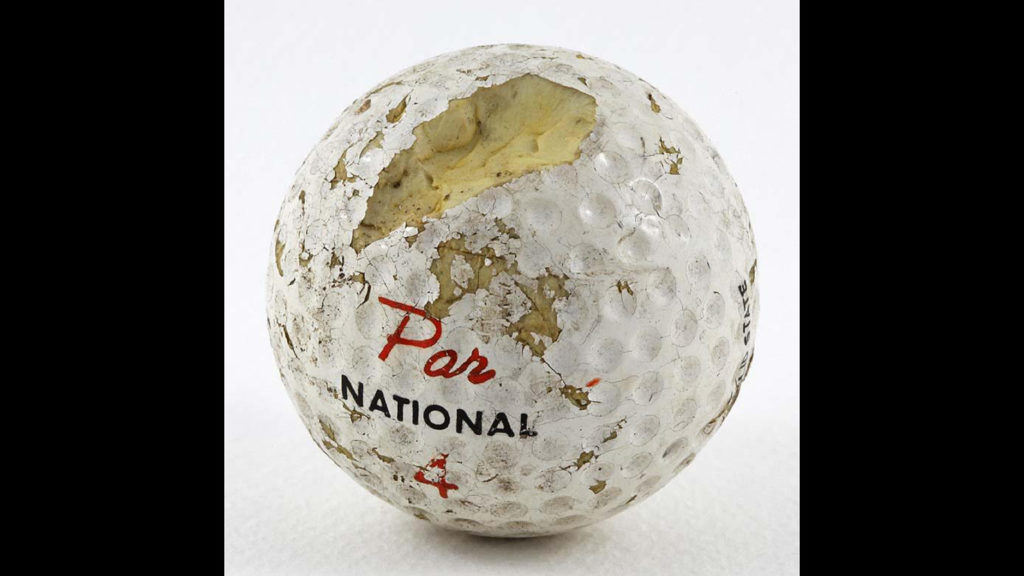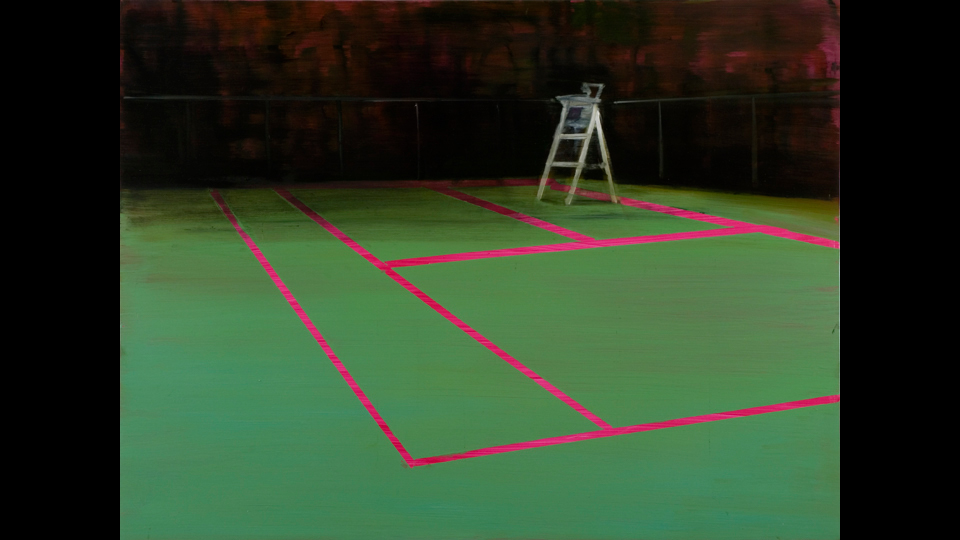Caldwell University
May 27, 2020
Art Exhibition to Explore “PLAY: An Iconography of Sport”
The exhibition “PLAY: An Iconography of Sport” will open at the Mueller Gallery at Caldwell University Sept. 10 and run through Oct. 9. It is free and open to the public.
The exhibit brings together ten contemporary artists who use images of sports in their work to communicate about a variety of issues. Artists use depictions of players engaged in sports and their attendant trappings, baseball cards and tennis courts, as metaphors for speaking about a range of political, social, philosophical, spiritual and aesthetic concerns.
The public is also invited to the artists’ talk 5 to 6 p.m. Wednesday, Sept. 12, and an opening reception to follow from 6 to 8 p.m. in the Mueller Gallery.
Tom Berenz uses the chaos of the game as a metaphor to discuss personal, sociopolitical, environmental and ideological issues. Through the motif of confusion, he explores the existential self and examines personal narratives, some more literal and others more enigmatic. Notions of loss, place, memory, space and time are central to his work.
Sara Douglas was trained as a dancer rather than as an athlete. Because of this, her attraction to a particular sport has often begun with an appreciation of its aesthetics rather than a thorough understanding of its rules and history. What strikes Douglas about soccer is its strange abstract quality and how even as the players are focused on the metrics of the matches, on scores, plays, and minutes left on the clock, their physical movements and facial expressions suggest an almost transcendent experience, a kind of transfiguration brought about by the physical and mental exertion the sport demands.
Robert Otto Epstein’s baseball card painting series represents his interest in language and symbols—how a signifier represents and takes precedence over the meaning of its subject. Batting and fielding stances are reduced to simple forms. Epstein pulls from a nostalgic past as he renders familiar collectible objects into deconstructed visual fields.
Jason Stopa’s uses iconic imagery from sports including fields, nets, and goals as means to explore formal possibilities. The resulting works feature layered patterns with optical effects. His surfaces alternate between thinly brushed oil paint and heavy impasto.
Clintel Steed makes thickly encrusted, expressionistic paintings that are about the explosion of an image and the impact it makes. When he does his paintings of divers and runners, Steed is inspired by how the Olympics challenge the human mind and spirit.
Barbara Friedman’s tennis court paintings speak about loss. There is an air of denial and defeat in these paintings that connect to Vittorio de Sica’s “The Garden of the Finzi-Continis.” The images she most remembers from that film depict members of a wealthy Jewish family in late-1930s Italy enjoying tennis on their private court, oblivious to the threats around them. In the end, they face a fascist court and are shipped to concentration camps.
Lee Goreas posits his position to high and low culture through objects and images related to the subjects of leisure and sport. He is interested in the rituals, laws and rules that govern them, the physical environments in which they take place and the paraphernalia and objects used in their agency, not as ends in themselves but as complex systems of signs and symbols of desire, power and embodied perception.
James Prez’s silhouettes of baseball players present the athletes in action—throwing a pitch or swinging a bat. Much is made of the childlike in contemporary art, which seems dominated by cartoon characters and other forms of kitsch, but what is truly childlike is the combination of playfulness and obsession that cuts to the root of the imagination. To come across a work that accomplishes that, as Prez’s vulnerably artless ballplayer icons do, is both startling and poignant.
Jennifer Watson’s tennis paintings involve a sport in which women are powerful yet perform in a space dictated not only by the rules of the game but by those of fashion and “beauty.” These works correlate to a culture in which women are in environments that bind and constrict under the guise of performing. The paintings bear Watson’s distinct handling—obsessive attention to details like hair, glassy, thin applications of paint, and the subtle use of modulated color with a candy-pop appeal to the flat, bright color.
Lisa Young loves watching televised golf for its quiet sonic landscape, the abstract trajectories the ball makes on the grass or against the sky, the tension of the putting green and the feeling of gravity-defying joy she experiences when the ball is airborne. By repositioning elements of the game, Young makes golf a metaphor for looking at aspects of studio practice, highlighting the marginal and the overlooked, questioning success/failure binaries and investigating the incomplete and transitory qualities of the sublime.







